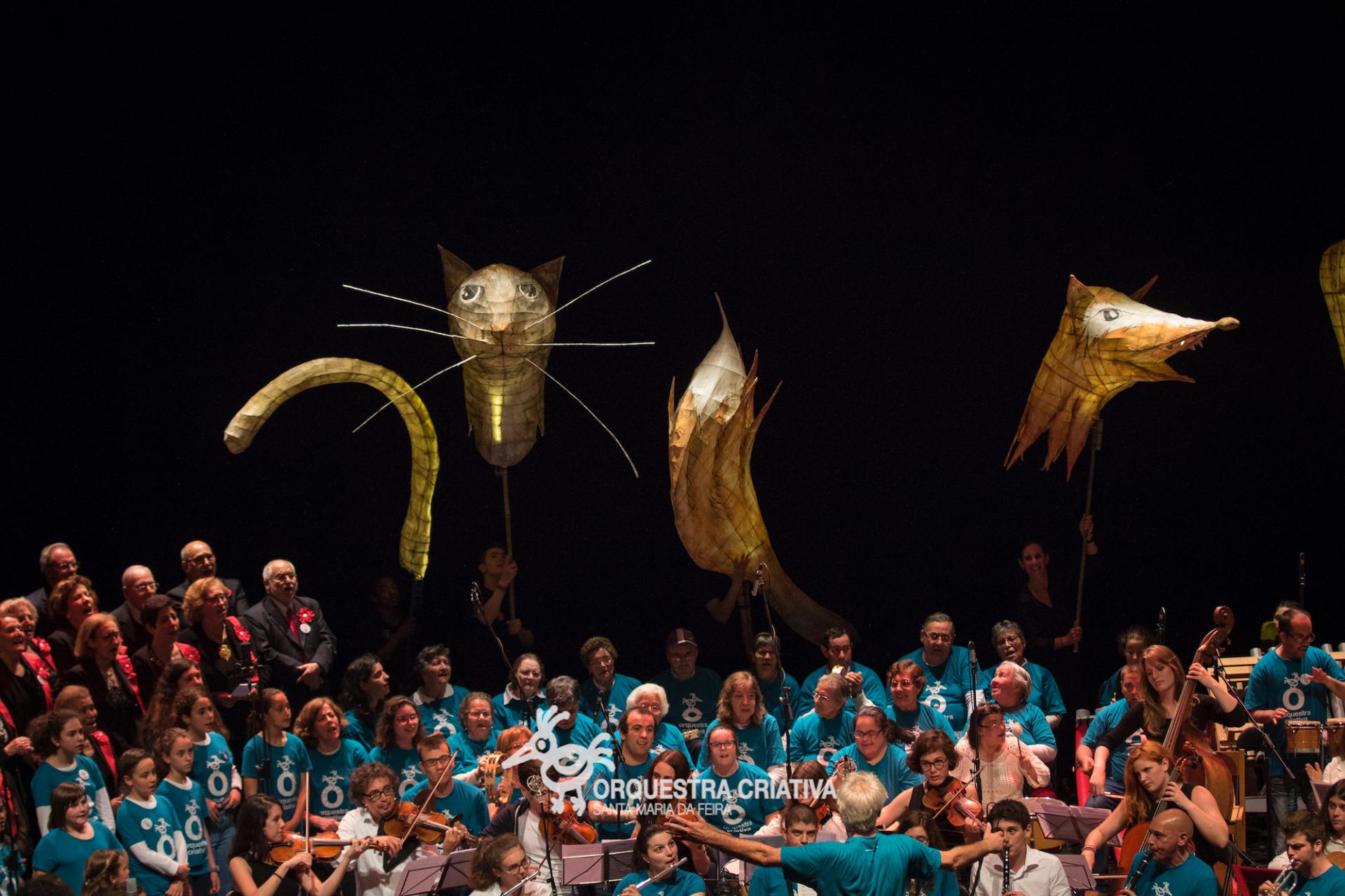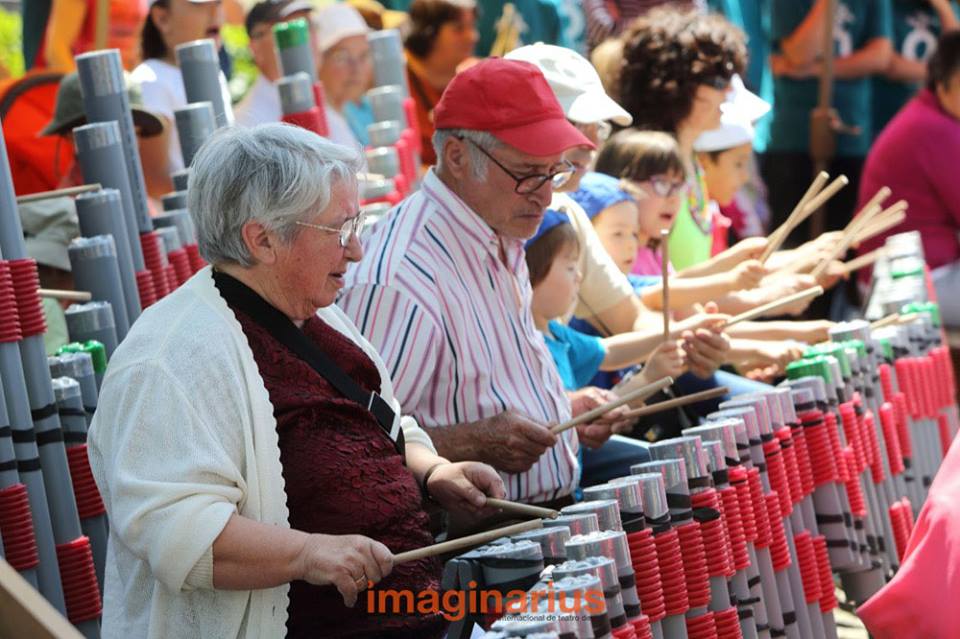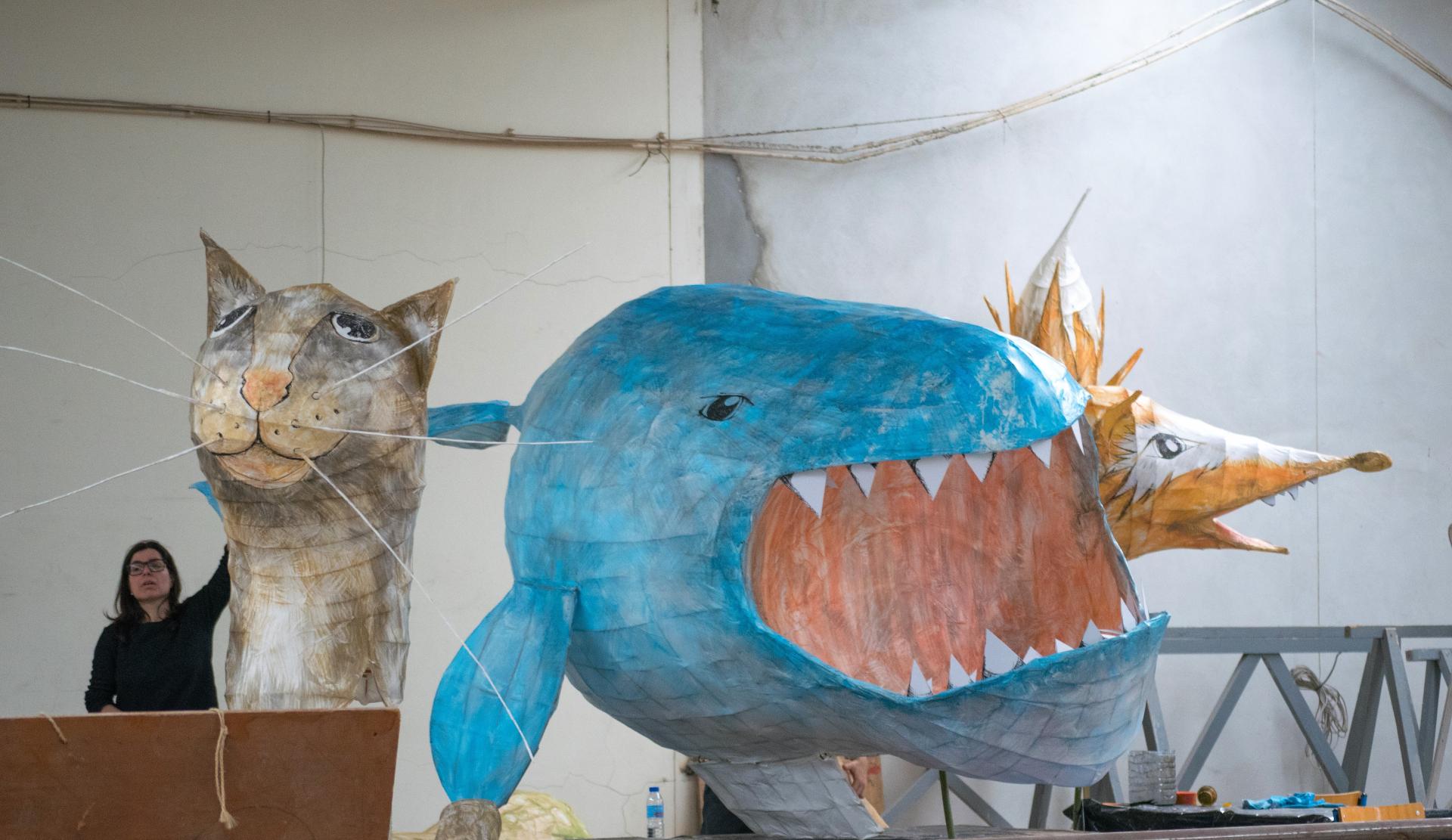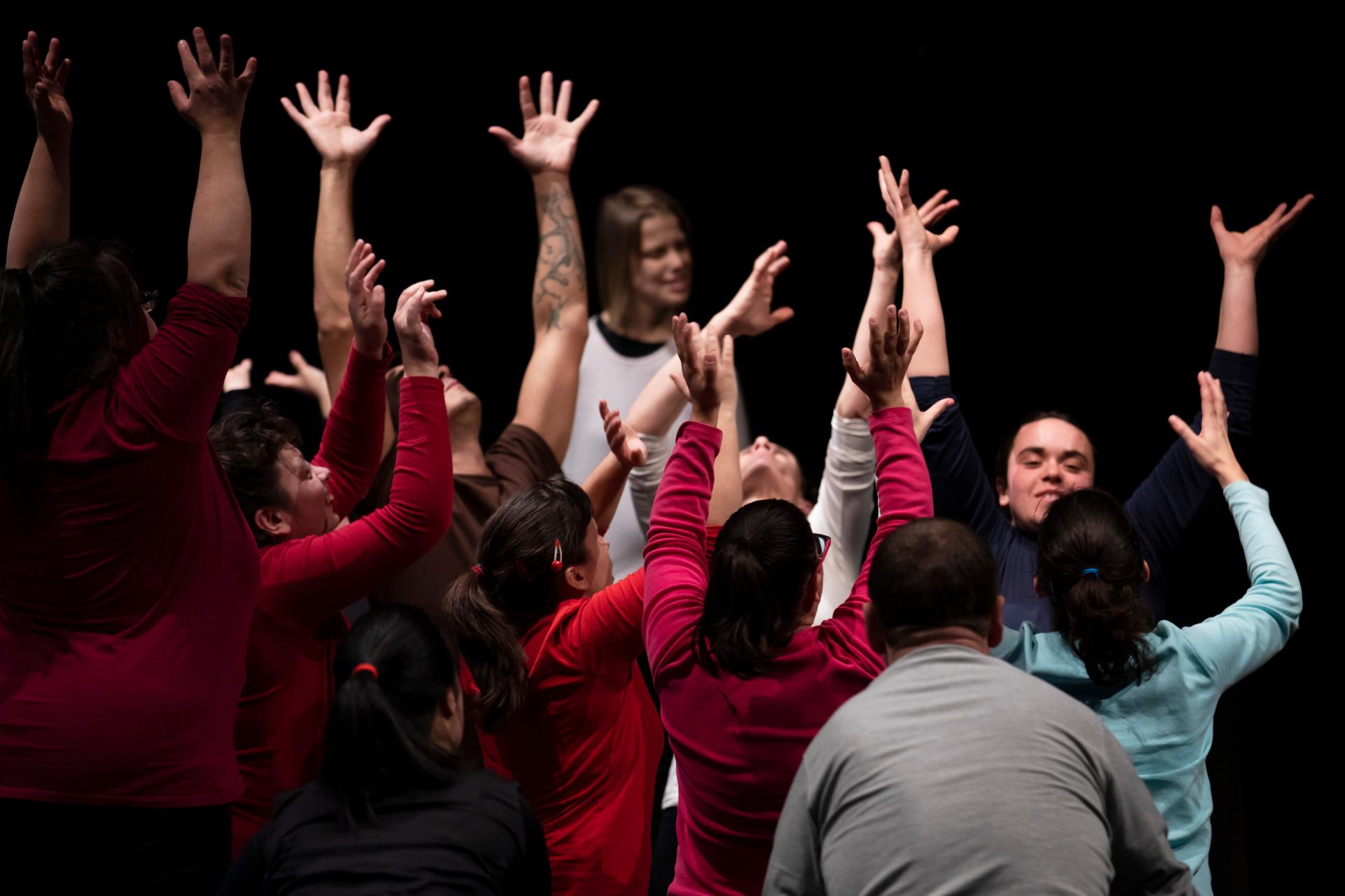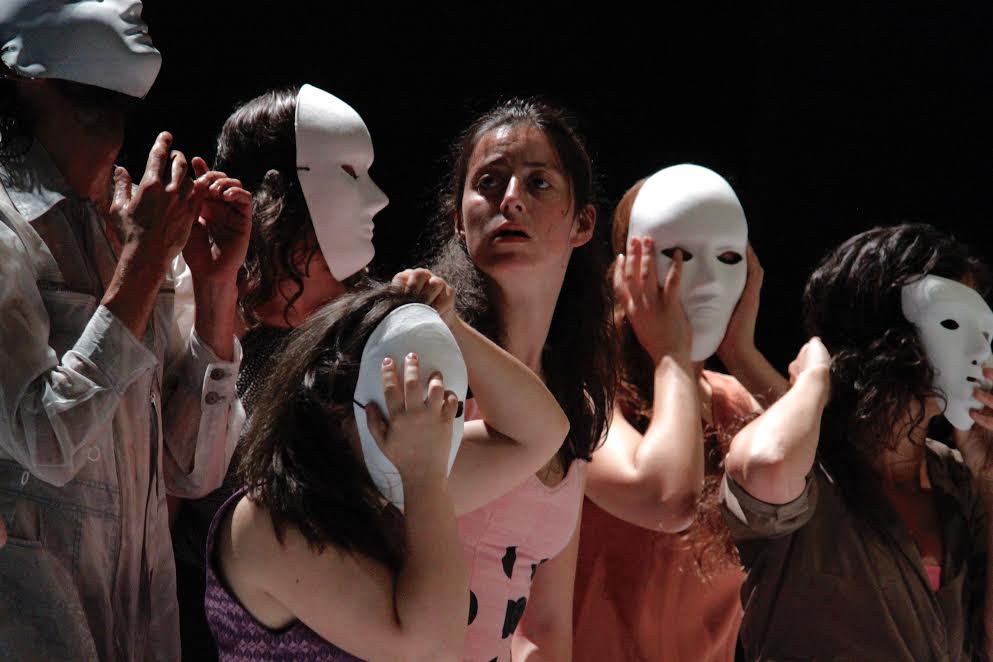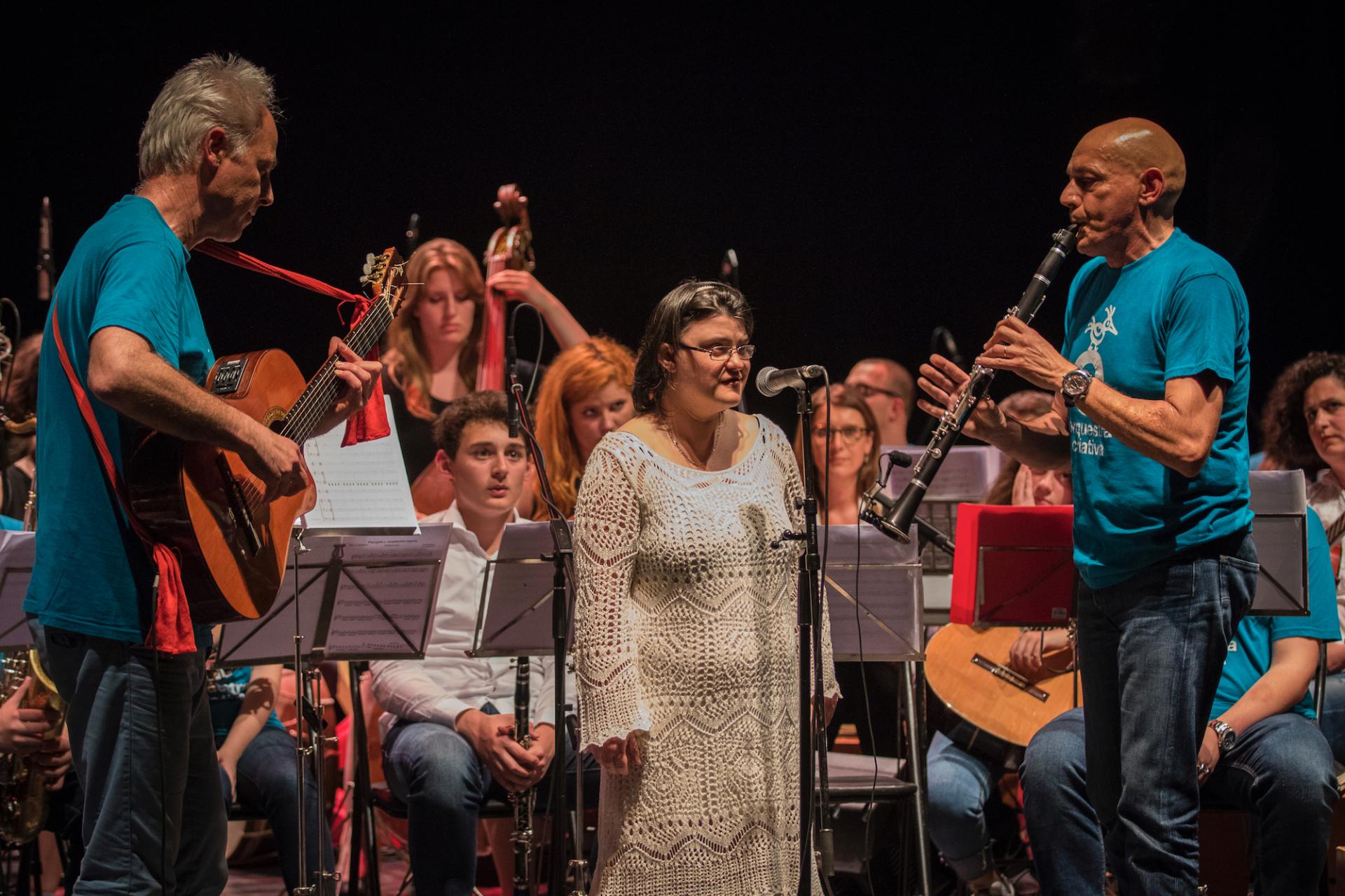Community Arts Network
Basic information
Project Title
Full project title
Category
Project Description
Developed by Social Action, Education and Culture Municipal Offices, Community Art Network aim was to make Arts more accessible for everyone, in particular to the most vulnerable to exclusion situations, promoting participation, enjoyment and creation, through inclusion and lifelong learning. It was implemented through a comprehensive approach including dance, music, theatre and visual arts, taking place at different stages like social housing, schools and community sites at peripheral areas.
Project Region
EU Programme or fund
Description of the project
Summary
Community Arts Network is based on an multidisciplinary vision social inclusion and sustainability. By supporting local-based arts projects it fosters social integration of vulnerable communities. The project includes different forms of arts such as dance, music, visual arts, theatre and audio visual. Therefore is a space for multidisciplinary experimentation, and designing local sustainable solutions. Furthermore, many actors working on social, educational and cultural sectors such as local entities and services, civil society organisations, local communities and many others relevant stakeholders were engaged in the network Shared and Participative Local Governance.
Several artistic local-based initiatives were developed and implemented under Community Arts Network, namely:
LaB InDança, an inclusive dance project (youth and adults with disability);
Orquestra Criativa Santa Maria da Feira (SMF), intergenerational music project (children, youth, adults and elders with disability);
Rufus & Circus, traditional percussion project (young people with fewer opportunities);
Germinar, pedagogic complementary project applied at the level of Secondary Education; Adapted Theatre (youth and adults with disability);
APROXIMAR, theatre in schools (young students with disability);
Poesia no Corpo, Corpo na Poesia (youth and adults with disability and people with mental health disorders).
Overall, the Project combined a holistic approach to Social integration trough Arts, starting from deconstructing preconceived ideas and prejudices and fostering active citizenship and ethics awareness in a space where artists could work collaboratively with communities. The activities developed under the network were designed to foster more humanized cities, or as Heidegger said, opened up the possibility of “inhabiting the world poetically”. It became a shared space of reflection, experiment and creation.
Key objectives for sustainability
Developed by Social Action, Education and Culture Municipal Offices, Community Art Network of Santa Maria da Feira aim was to make Arts more accessible for everyone, in particular to the most vulnerable to exclusion situations fringes of the population, promoting participation, enjoyment and creation, through inclusion and lifelong learning.
The initiatives listed above are a result of creative processes and mechanisms of socialization such as dialogue and assessment, collaboration, participation, negotiation in different levels and stages. This contributes to key objective to increase of the individual's ownership and sense of belonging through the promotion of social ethics. Community Arts Network was able to develop innovative interventions and integrated responses implemented with and for children and youth, elderly population, people with disabilities, families and overall community. Therefore, to promote social inclusion initiatives encouraging personal, social and professional skills development among excluded or disadvantaged groups. There were established sustainable and innovative partnerships with a wide range of local entities, such as social care institutions, schools, arts organisations, governmental entities and artists. This process also allowed to strengthen local organizations offering social work services through artistic languages before. Within the network, a community infrastructure for training, creation and artistic research was set up. Bridges between local and the global dimension were established.
Through participatory planning, design and implementation, the Network fostered active citizenship and quality of life as well as ensured the access to public areas and cultural facilities for all. It is about an integrated cultural communities and organizations commitment for sustainable development. The Network accomplished key objectives in terms of sustainability, mobilizing the power of the arts for all and with each one person.
Key objectives for aesthetics and quality
Aesthetic and artistic sensitivity, as well as critical and creative thinking enables inclusive work with communities. Education and training for different artistic languages and expressions can generate personal fulfilment and active participation, in particular of those who are excluded for real or perceived.
Arts allows finding different codes than logical-verbal rationality by promoting access to diversity, and the ownership of different artistic languages and expressions. Arts fosters sensitivity, awareness of physical body, values and principles and the pleasure of learning. Finally, arts enables people to take on challenges and own failures and also to interpret and intervene in the world, making everyone feels part of it.
Through this methodological approach, Community Arts Network found its way to aesthetics key objectives. Developing critical thinking skills, the search for other meanings, other points of view, other possibilities the Project created many spaces for sharing, argumentation and knowledge. In addition to validating individual and subjective existence, this aesthetic experience, is an expression of a community.
Public presentations (shows, exhibitions, installations, etc.) are key for everyone engaged as it are deeply transforming. Same kind of public presentation encourages participation, highlight people’s knowledge and traditions. This shared coexistence fosters integration at the community level . The access to artistic displays reinforces each one feeling of belonging to the community - in particular, those who are in a situation of greater vulnerability. Following this, artistic projects with the community multiply the possibilities of interaction between events and the public, promoting a direct contact with the daily reality, giving it another aesthetic potential. Ensuring Art is for all means necessarily not excluding anyone. One’s challenge is all’s challenge.
Key objectives for inclusion
Inclusion is not just Equity. Ensuring access, on its own, does not mean that there are equal opportunities for all. There are multiple languages and different way of self-expression and understanding of the world, that should be fostered and encouraged. Following this, social inclusion requires long-term investment, so that it has a lasting impact and triggers social transformation.
In Community Arts Network, everyone had the opportunity to be part of the Project creative process and implementation, focusing on the process and not the outcome. Allowing different artistic languages it was possible to engage a wider range of participants.
Thus, mid and long-term communitarian artistic projects, workshops, training actions and multidisciplinary presentations are part of the Project, geared towards specific audiences, providing rewarding experiences to all participants.
These options using simple processes, original methods and alternative languages contributes to individual valorisation, self-esteem and to the group identity and sense of belonging, including people that were not usually accessing arts.
It also reinforced activities focus on priority areas such as communicational empowerment, multidisciplinary activities experimentation; training for active citizenship; skills development and promoting equal access to culture. Also encouraged knowledge production and creation of social cohesion initiatives that increased the feeling of belonging, through cultural and artistic participation and promotes inclusion and accessibility of vulnerable groups and with specific disabilities.
The goal was to highlight the role of art as a catalyst for individual and social transformation through training and artistic creation, which was combined with an artistic research and social intervention process with academic publications and the media, bringing visibility to the projects carried out.
Results in relation to category
It is important to create a safe place were people can express themselves and act freely, like assemblies to discuss with people about creation(s). Not much is needed to create through arts. Knowledge sharing, availability and horizontal and democratic practice hierarchy are key elements for Arts work at the community level. To bring Arts and artists closer to the community, creating processes of community creative collaboration and participation, fosters empowerment.
Participant’s personal and social skills, responsibility, concentration, interpersonal relationships and teamwork improved by engaging different projects. This was observed throughout the workshops. Public presentations and shows contributed to raise self-image reinforce self-esteem and increase the participants' sense of belonging.
Another outcome highlighted by the participants was the fact that they were able to meet and connect with new people fighting social isolation, in particular of senior people. Over time, participants showed progress in different performance expressions, namely rhythmic interpretation and motor coordination.
Community Arts Network visibility and credibility was achieved with local institutions and partners through the active participation of the several groups in the development of an aesthetic process. The artistic object creation proved to be an enhancer of the collective identity plus an individual emancipator. The Project gave voice, responsibility and sense of commitment to participants. Ensuring creative processes as an engine of empowerment for the participants was always more important than the outcomes. Because this proximity enhances in participants the will to be, the power to be with oneself and with the other, the personal, social and cultural valorisation.
Community Arts Network enlightened culture and arts crosscutting and social and economic sectors need of commitment for a truly inclusive society.
How Citizens benefit
Community Arts Network fostered local social and artistic stakeholders qualification and empowerment. They were able to improve their project management and applications design and submission skills.
Be designing and attending Workshops, summits and smaller meetings reinforced stakeholder’s cooperation abilities. Whenever possible the participation of other people or entities who were not directly part of the network was encouraged.
Collective participation boosted the delivery of collective learning proposals, reports, project outputs like tool kits, videos, web pages, and other communication materials. This teamwork methodology stimulated knowledge and good practices sharing. Following this, other interested parties in and out Santa Maria da Feira were able to benefit from project outcomes
Community Arts Network is a place where everyone can definitely fit and have a voice. The initiatives that shape the Network like LaB InDança, Orquestra Criativa SMF, Rufus& Circus and Germinar, reflect the different ways of thinking and approaching artistic practices with and for distinct publics from all ages. A pluralistic, innovative, custom-made Network that engages music, theatre and dance with people from all ages and backgrounds. Lead by a group of artists, social workers and educators using multiple artistic languages and ways of doing. To spread the will to do more and better, this Network promotes innovative practices and disciplinary intersections through workshops where participants can experience positive and affective learning. Tailored workshops optimized the creation opportunities potential.
Innovative character
The community arts projects that shape the Network follow the principle of arts as an instrument of social inclusion. It were designed to make Arts accessible to everyone.
There is a very strong innovation component about Community Arts Network, because it becomes necessary to create alternative ways of making art (dance, music, theatre) and to break with conventional paradigms. Thus, for example when working with people with disabilities and special needs when there are no instruments adapted to the work with the group, new ones are adapted or invented. Regarding dance, body works from its disability as an artistic object.
Integrating these projects in regular concert halls and festivals is a vehicle for cultural and artistic inclusive requirements spreading. It humanizes organizations and democratize culture access. It brings non-professional interpreters closer to the audience and vice versa.
Although artistic projects that make up the Network diversity, all have artistic excellence as a criterion in aesthetic, technical, uniqueness and intellectual and emotional satisfaction. This practice type shares some common characteristics: co-creation by professional and non-professional artists (called participants), search for balance between process and outcome and relies on partnerships. Embracing these principles is determinant to extend cooperation networks, to question and to transform ways of thinking and acting on artistic creation concept. It is also important to create records and knowledge. Thinking about practices and putting ourselves in question leads to transformation. Changing mind-sets should be a daily practice as well as thinking together and sharing solutions. By doing this we can create spaces for change and to spread the compulsory requirement of inclusive societies.

